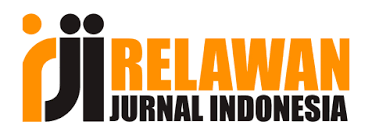Classroom Variables and Learning Outcome Amongst Undergraduate Students of Education in Rivers State Universities
DOI:
https://doi.org/10.17605/OSF.IO/HM2TZKeywords:
Classroom, Classroom Variables, Learning OutcomeAbstract
This study investigates classroom variables and learning outcome amongst undergraduate students of education in Rivers State Universities. Descriptive survey design was adopted in this study. Four research questions were formulated to guide the conduct of this study. Also, four corresponding null hypotheses were tested in the study. The population of the study comprised of all the 2016-2020 undergraduate students of education in Rivers State Universities estimated to be 24,781. Krejcie and Morgan (1970) statistical table was applied to select the sample of 261 public undergraduate students of education. A self-designed instrument titled: Classroom Variables Questionnaire and Learning Outcome Questionnaire”. Were used for data collection. The data collected were analyzed using Pearson’s Moment Product Correlations answer the research questions and test the null hypotheses. The results of the analysis of the hypotheses were tested for statistical significance at 0.05 alpha level. The findings of the study are: (1) Class size influences learning outcome among undergraduate student of education in Rivers State Universities. (2) There is a significant difference in the mean rating of male and female students on the influence of teacher-student relationship on learning outcome among undergraduate students of education in Rivers State Universities. (3) Teacher instructional delivery strategy influences learning outcome among undergraduate student of education in Rivers State Universities.
References
2. Adimonyemma, N. R, Akachukwu, E. E., Igboabuchi, N. A. (2018). Impact of class size on students' academic performance in biology in Idemili North Local Government Area of Anambra State. International Journal of Education and Evaluation 4(8), 22-32.
3. Ayeni, O.G, Olowe, M.O. (2016). The implication of large class size in the teaching and learning of business education in tertiary institution in Ekiti State. Journal of Education and Practice 7(34), 65-69.
4. Benavot, A. (2011). Improving the provision of quality education: Perspectives from textbook research. Journal of International Cooperation in Education, 14(2), 1–16.
5. Garira, E., Howie, S., Plomp, T. (2019). An analysis of quality of education and its evaluation: A case of Zimbabwean primary schools. South African Journal of Education, 39(2), Article #1644. https://doi.org/10.15700/saje.v39n2a1644.
6. Meera, N. S. (2015). Quality education for all? A case study of a New Delhi government school. Policy Futures in Education, 13(3), 360–374.
7. Mohammad, R. T. (2017). Assessing the quality of education in Saudi Arabia. International Journal of Economic Research, 14(17), 521–528.
8. Oyebade, S.A., Oladipo, S.A. & Adetoro, J.A., (2008). Determinants and strategies for quality assurance in Nigerian university education. http://herp-net.org.
9. Pianta, R. C., Hamre, B. K. (2009). Conceptualization, measurement, and improvement classroom processes: Standardized observation can leverage capacity. Education Researcher, 38(2), 109–119.
10. United Nations Educational, Scientific and Cultural Organization. (2004). Education for all: The quality imperative. EFA global monitoring report 2005.
11. United Nations Educational, Scientific and Cultural Organization. (2014). Education for all global monitoring report—Teaching and learning: Achieving equality for all.

















